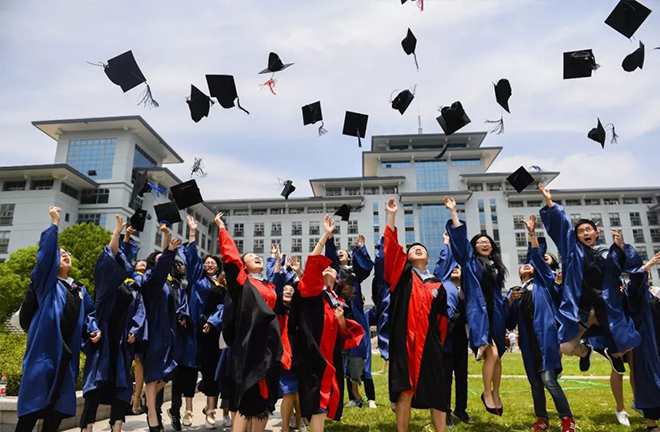Evaluation system to be reshaped for new liberal arts

FILE PHOTO: New liberal arts construction, an innovative act in higher education, is given a higher premium in China.
New liberal arts construction is an innovative act that aims to impact academic planning, disciplinary structure, talent cultivation, and the academic evaluation system. As the act is gradually implemented, it is inevitable that indexes, modes, and other key factors of academic evaluation need to be reformed, so as to remain adaptable to the development of new liberal arts.
Essence of new liberal arts
Since the 19th century, the mainstream disciplinary trend has been characterized by division between disciplines based on knowledge categorizing. Led by the tides of convergence between disciplines that emerged in the late 20th century, academic research is moving toward more openness and profundity. The transition from division to convergence, which will accomplish better disciplinary integration, will be the main academic trend in the 21st century. It is thus the right timing that the new liberal arts construction was proposed in this context.
The essence of new liberal arts lies in the convergence and blending between humanities, social sciences, science, engineering, agriculture, medical science and other natural sciences, as well as applied technologies. It particularly targets the breaking of frictions between humanities and sci-tech, and facilitates communication between these two major fields. In this way, new problems that arise as sci-tech progresses can be resolved by applying research results and adopting methods of humanities and social sciences; the research capability of liberal arts can also be strengthened by absorbing elements from sci-tech.
Cross-disciplinary features have been increasingly prominent in Chinese academia in recent years. “Revival of Rites and Contemporary Etiquette Reconstruction Study” is a program that involves a wide range of disciplines such as ancient Chinese history, philosophy, archaeology, sociology, art, education, etc. Digital multi-media information processing technology is also largely applied in the program. Aimed at multi-dimensional academic effects, the research findings of the program are presented in different forms. Apart from monographs, papers, and other written texts, databases, data interactive platforms, and multi-media images are also adopted to demonstrate the research. The App installation as an auxiliary part of the program has also been completed.
Barriers to be bridged
The multi-dimensional display of research indicates a big step in new liberal arts development. Such an approach is enlightening for driving new liberal arts study to transform from monographic study to a comprehensive one. It is also inspirational for the transition of refined elements embodied in traditional Chinese culture to modernization. If perspectives are confined within one single discipline, the evaluations of these different types of research results will thus be biased. Barriers between research yielded in the fields of liberal arts, science, and engineering need to be bridged, which means that the obsolete evaluation modes can hardly meet newly arising demands.
The research directed by the previous theory-based and knowledge structure-based path will gradually be replaced by a thinking dedicated to solving practical issues. There will be a growing body of research that is in multifold forms. The queries encountered in the past evaluation work will become hard nuts to crack in the new liberal arts era.
‘Not simply the overhaul of all’
However, the establishment of a new evaluation system cannot be accomplished at one stroke. New liberal arts should not be defined as simple intersections between different disciplines, and the simple superimposition of all previous evaluation methods does not itself make an inventive evaluation system. Diversified academic forms will all undergo a process of being evaluated to gain recognition. These research forms must be fused together in a substantial way under the new evaluation framework.
For new liberal arts construction, to make breakthroughs does not mean the overhaul of all that is included in the original system. But rather, the attempts at a new system should take the original disciplinary framework as the basis. The specialized study should also be continued instead of being radically blotted out. Efficacy, especially long-term social benefits, should be taken as the criterion for measurement of research. However, the consideration of efficacy in academic evaluation should avoid a utilitarian attitude. Scholars should also come up with evaluation methods that are more systematic to gradually forge an academic community that fits with the demands of new liberal arts.
Zhang Tao is from the Institute of National Governance and Global Governance at Tsinghua University.
Edited by BAI LE
